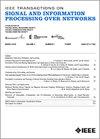整合时空结构的社会网络稳健谣言检测
IF 3
3区 计算机科学
Q2 ENGINEERING, ELECTRICAL & ELECTRONIC
IEEE Transactions on Signal and Information Processing over Networks
Pub Date : 2025-07-30
DOI:10.1109/TSIPN.2025.3577317
引用次数: 0
摘要
在高度信息化的今天,谣言传播的速度和范围对社会稳定和个人利益构成了极大的威胁。人工检测谣言需要大量人力。因此,自动谣言检测受到了极大的关注。近年来,一些研究者开始关注利用传播结构特征来识别谣言。然而,现有的基于传播结构的方法要么只利用传播的空间特征,要么只利用传播的时间特征。很少有模型能够有效地利用这两种类型的传播结构特征。提出了一种基于源引导的时空联合谣言检测模型。SGTS动态地将事件的传播过程划分为一系列时间子事件。此外,SGTS采用信息级连接策略,将前一个时间阶段的空间结构特征整合到后续阶段的编码中。这样,SGTS可以有效地捕捉传播的时空特征。实验结果和对常用数据集的深入分析表明,SGTS比现有方法有了显著的改进。本文章由计算机程序翻译,如有差异,请以英文原文为准。
Integrating Temporal and Spatial Structures for Robust Rumor Detection in Social Networks
In today’s highly informalized society, the speed and scope of rumor dissemination pose a great threat to social stability and personal interests. Detecting rumors manually requires a lot of human effort. Therefore, automatic rumor detection has received significant attention. Recently, some researchers have focused on using propagation structural features to identify rumors. However, existing propagation structure-based methods either utilize only spatial features or only temporal features of propagation. Few models can effectively leverage both types of propagation structural features. This paper proposes a Source-Guided Temporal-Spatial joint rumor detection model (SGTS). SGTS dynamically divides the propagation process of an event into a series of temporal sub-events. Additionally, SGTS employs an information-level connection strategy that incorporates spatial structural features from previous temporal stages into the encoding of subsequent stages. In this way, SGTS can effectively capture the spatiotemporal features of propagation. Experimental results and in-depth analysis on commonly-used datasets demonstrate that SGTS achieves significant improvements over existing methods.
求助全文
通过发布文献求助,成功后即可免费获取论文全文。
去求助
来源期刊

IEEE Transactions on Signal and Information Processing over Networks
Computer Science-Computer Networks and Communications
CiteScore
5.80
自引率
12.50%
发文量
56
期刊介绍:
The IEEE Transactions on Signal and Information Processing over Networks publishes high-quality papers that extend the classical notions of processing of signals defined over vector spaces (e.g. time and space) to processing of signals and information (data) defined over networks, potentially dynamically varying. In signal processing over networks, the topology of the network may define structural relationships in the data, or may constrain processing of the data. Topics include distributed algorithms for filtering, detection, estimation, adaptation and learning, model selection, data fusion, and diffusion or evolution of information over such networks, and applications of distributed signal processing.
 求助内容:
求助内容: 应助结果提醒方式:
应助结果提醒方式:


